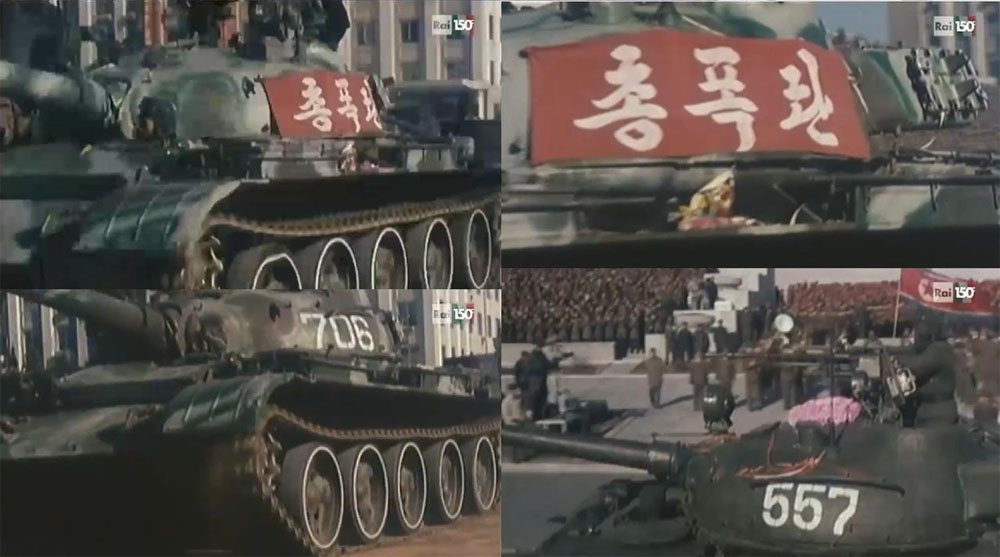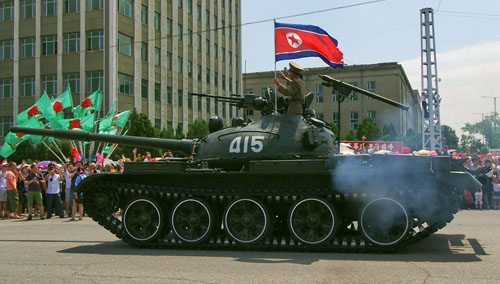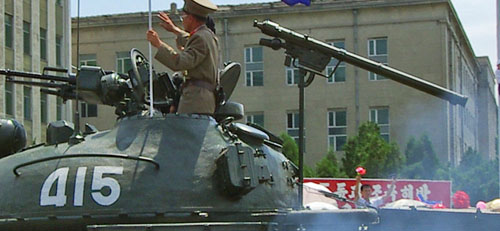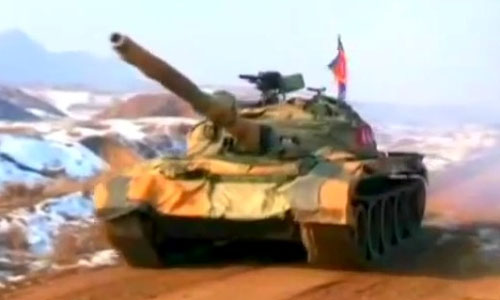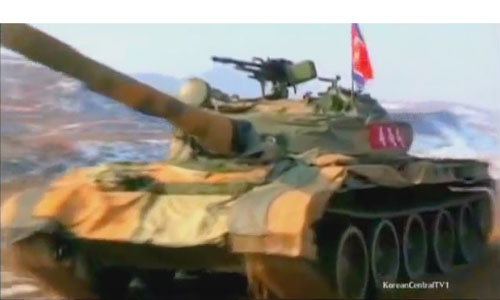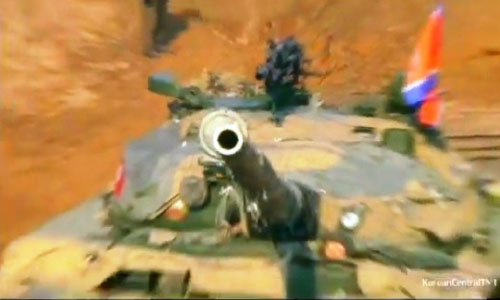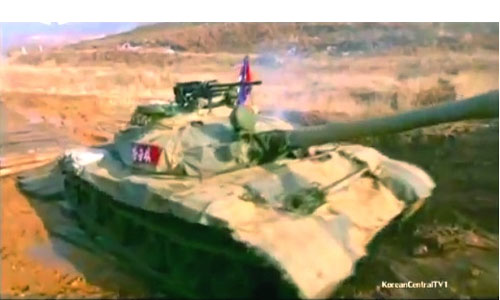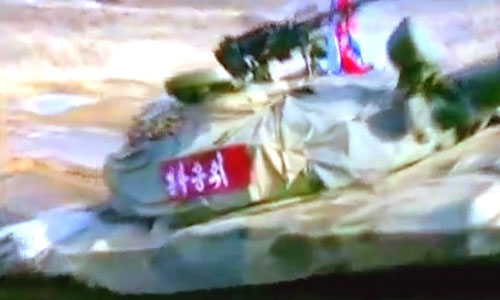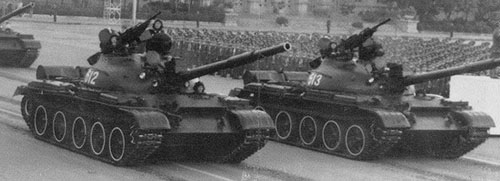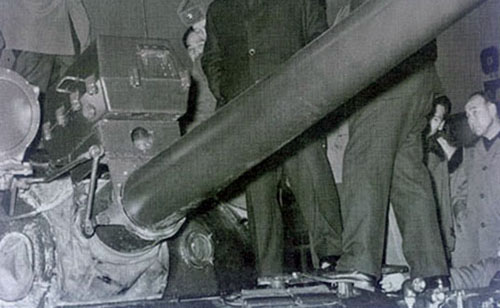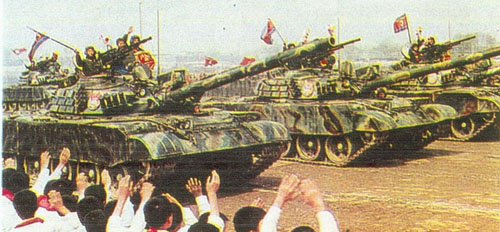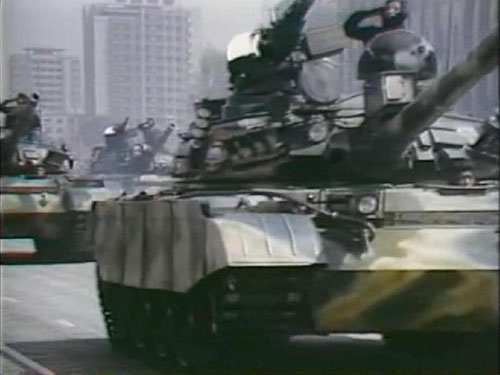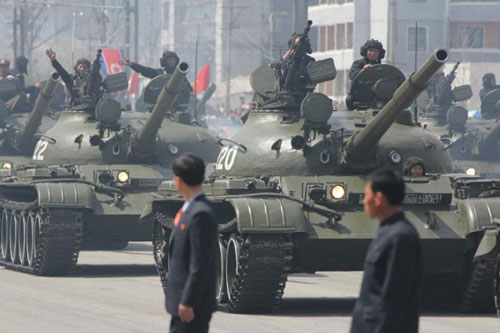
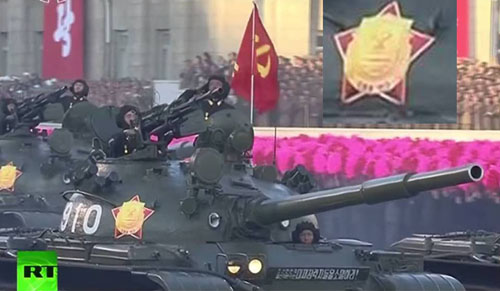
Chonma-ho I (probably of Russian production) during a parade.
Note the tracks with rubber chevrons, a North Korean characteristic never seen on Russian/Soviet T-62s.
They are updated with 14.5 KPM machine gun instead of the original 12.7 mm DShKM of T-62s.
Chonma-Ho I during a parade, probably in 2015.
All vehicles feature an emblem on the turret (unclear if painted or it was an adhesive).
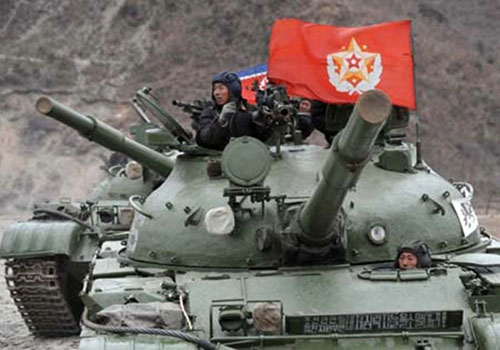
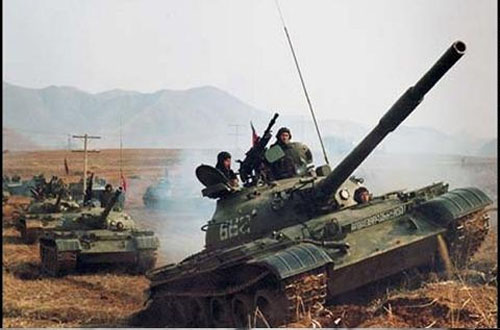
Note the small rings on the turret sides, absent on usual T-62. Note also the white sheet with some mark, fixed with wire to the left turret side.
Again, Chonma-ho I during maneuvers.
Small bolts or rings are visible on the lower part of the front glacis.
Note that the tanks bear the usual all-metal tracks of T-62 instead of the type with rubber chevrons.
